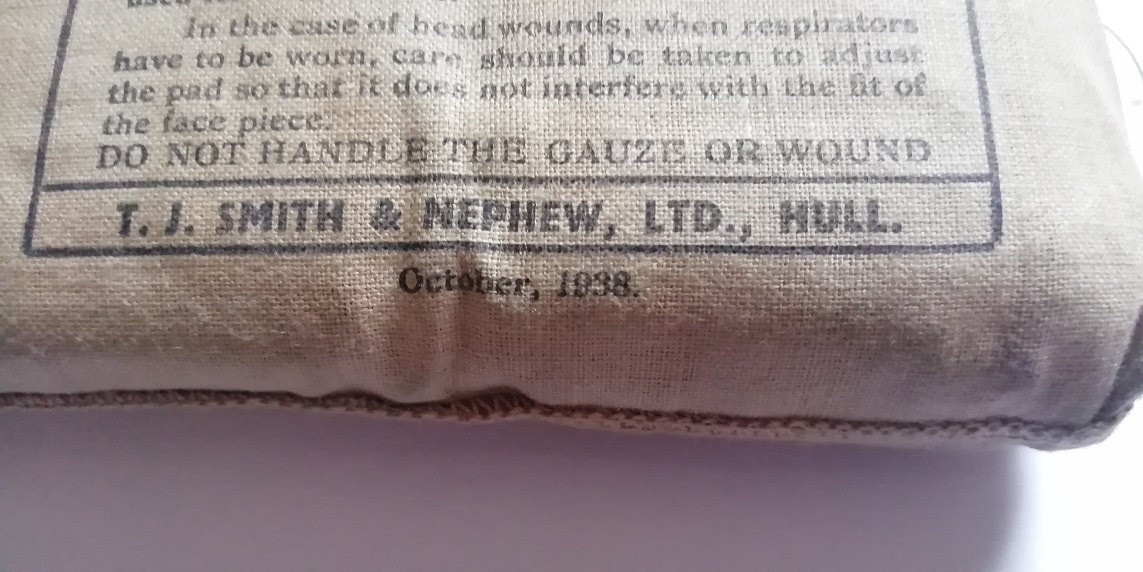|
First Field Dressings were introduced for use by the British Army during the Boer War. They were also issued during the First World War. They contained two bandages with safety pins and were to be used om wounds before the injured person could be carried to a first aid station or similar. Each serviceman had their own First Field Dressing and if you came across an injured soldier you were to use their own bandage on them. Special pockets in the tunics were incorporated to hold the bandage and later pockets on the leg of battledress did the same.
With the fear of bombing attacks on civilian populations growing (the bombing attack on Guernica during the Spanish Civil War occurred on 26 April 1937) the Home Office saw a requirement for dressings to be available for bombing casualties by first responders (in many instances members of the Warden's Service). The bandages would deal with injuries associated with bombing (shrapnel, flying glass etc) before the injured could be transported to a first aid post or local hospital. The below is an October 1938 First Field Dressing made by Smith & Nephew. As no uniform was issued to the fledgling Civil Defence Services at this time the bandages were most likely issued as part of small first aid pouches or even carried in pockets. I've not heard of instances of the bandage carried in a pocket of the bluette overalls. I assume the requirement was not necessary as dedicated first aid responders were available from 1939. With the introduction of the serge uniforms (battledress for men and tunics for ladies), special pockets were incorporated in the designs. Civil Defence trousers followed the British Army pattern and included a pocket on the front right of the trousers. On the Pattern 71 tunic a special pocket was made in the lining to hold the bandage (similar to how they had been for First World War soldiers). A larger bandage called a 'Shell Dressing' was also made with Home Office approval and examples are also dated from 1938.
2 Comments
Nigel Manning
5/31/2022 18:59:34
I have just discovered an unopened 1938 shell dressing whilst clearing my late mother's house. My late father was involved in fire watching during the war and then in the St John's Ambulance service. I'm not sure what to do with the dressing, but if a museum would like it I'm sure my parents would have been happy to donate it.
Reply
Website owner
5/31/2022 20:00:57
There are thousands of these and I cannot see any museum wanting one TBH. Best flog it on eBay.
Reply
Your comment will be posted after it is approved.
Leave a Reply. |
Please support this website's running costs and keep it advert free
Categories
All
Archives
June 2024
|
|
|
Copyright © 2018–2024
|


 RSS Feed
RSS Feed